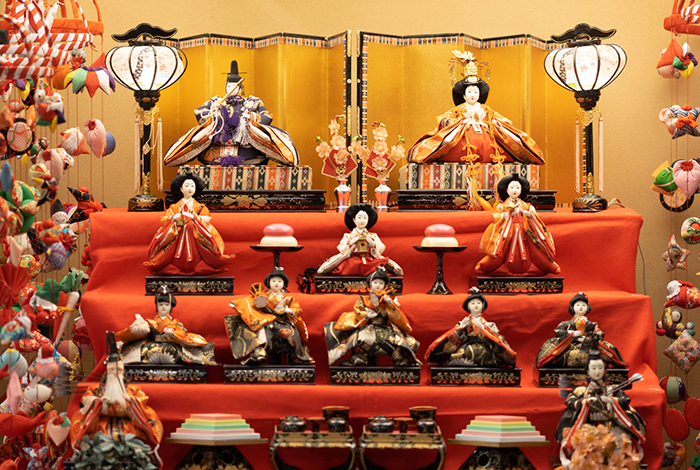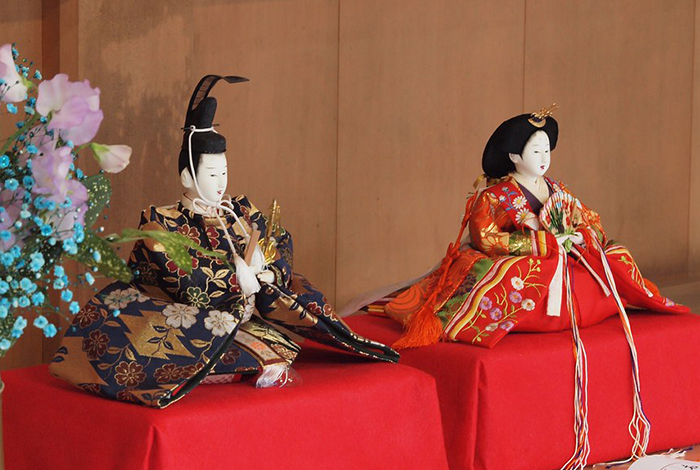Hinamatsuri
Blessings for Health and Safety
March 3 marks Hinamatsuri, also known as the Doll's Festival, Girls' Day, or Peach Blossom Festival, an exclusive celebration for Japanese girls. On this day, families with daughters dress them in beautiful kimonos and display a set of ornamental dolls on tiered platforms.
The central element of Hinamatsuri is the elaborate arrangement of Hina dolls, traditionally set on seven-tiered platforms. On the first tier sit the imperial figures of the Emperor and Empress. The second tier features three court ladies-in-waiting, holding a sake bottle, cup, and pot, respectively. A band of five court musicians occupies the third tier. The fourth tier is for ministers and their retainers. Three servants are placed on the fifth tier. The sixth tier holds miniature furniture, including wardrobes and dressing tables, while the final, seventh tier showcases items such as an ox cart, palanquin, and other paraphernalia. In total, these displays feature fifteen main Hina dolls, typically accompanied by offerings of rice cakes (hishi mochi) and peach blossoms.
Even today, in some areas of Japan, people retain the tradition of floating the Hina dolls down a river on the night of Hinamatsuri. This ritual symbolizes the dolls absorbing any misfortune and illness from the family's daughters, thereby blessing them to grow up healthily and safely. Conversely, it is believed that if the Hina dolls remain displayed after Girls' Day, they might hinder a daughter's future happiness and well-being.



